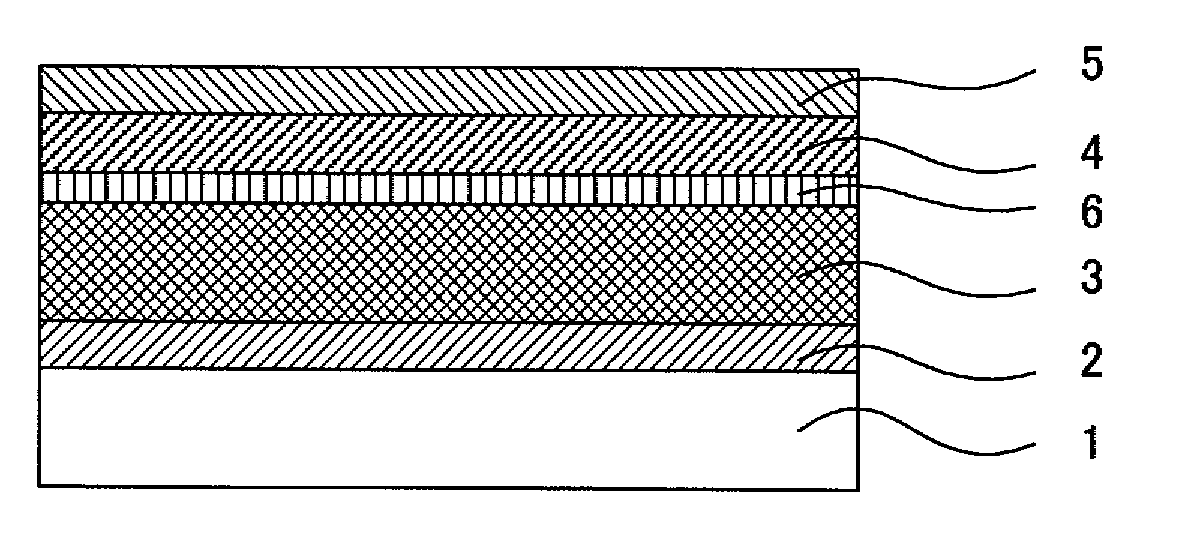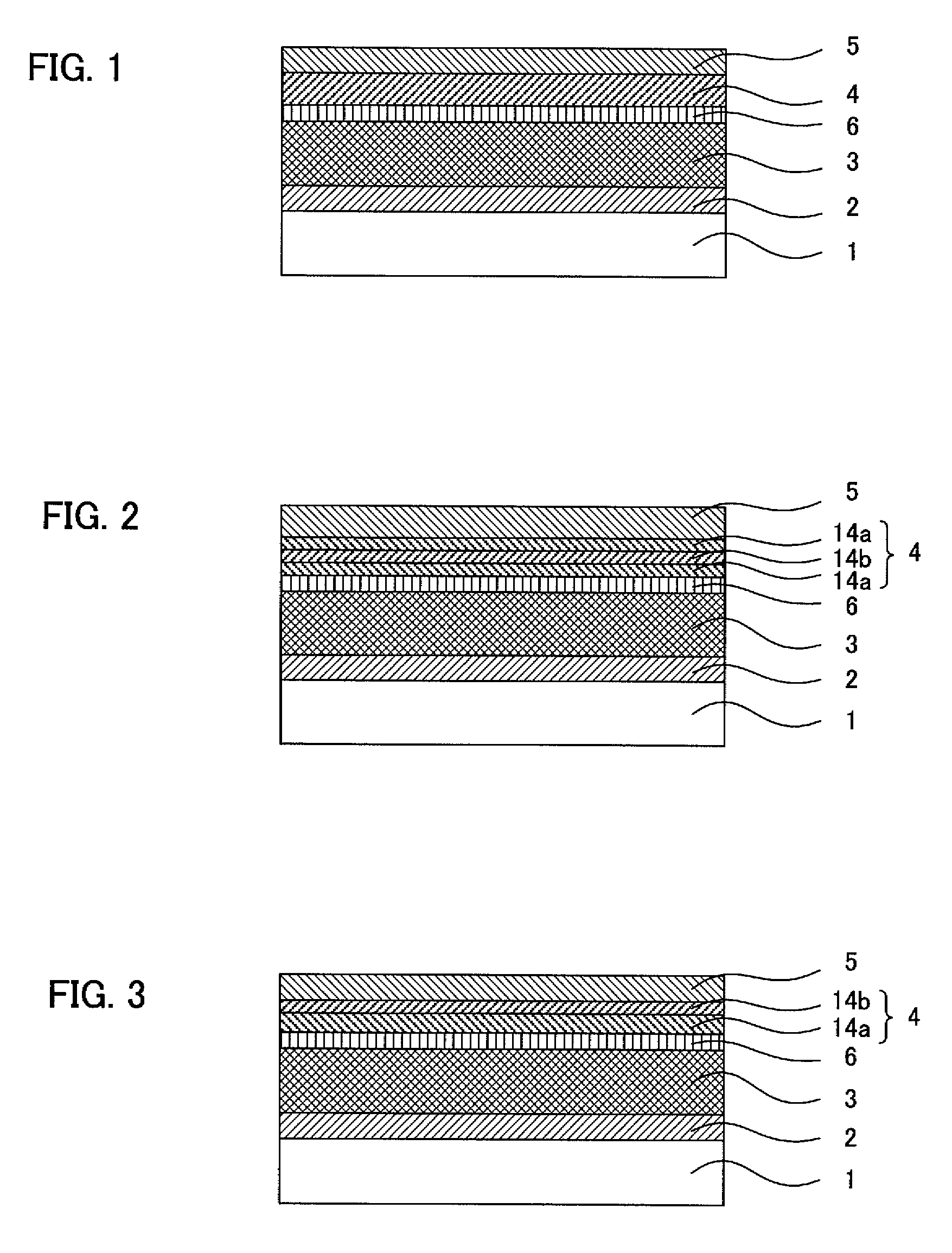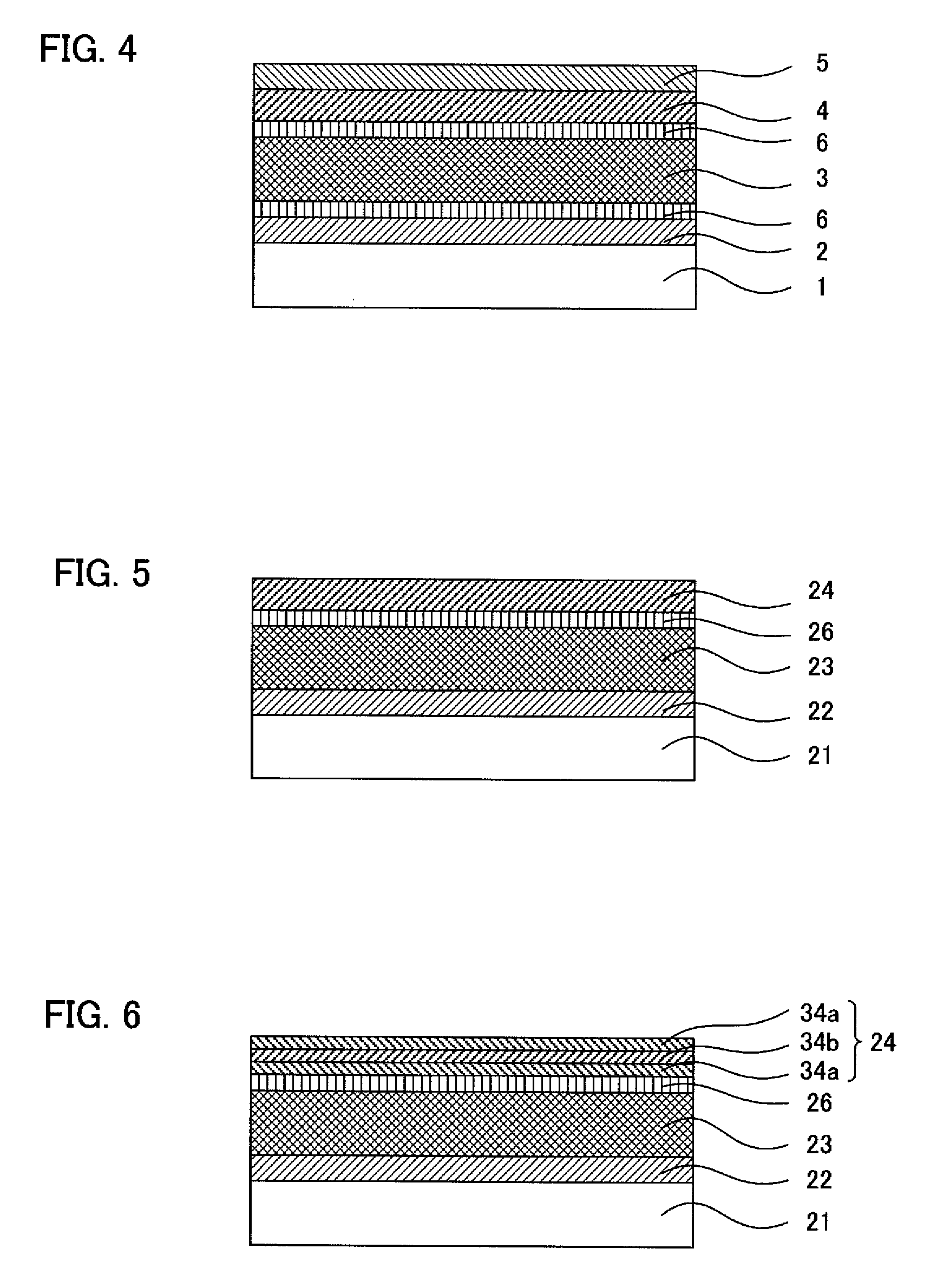Organic electroluminescent element
a technology of electroluminescent elements and organic materials, applied in the direction of discharge tubes/lamp details, discharge tubes luminescnet screens, other domestic articles, etc., can solve the problems of reducing the light emitting efficiency, reducing the current density, and reducing the light transmittance efficiency, so as to improve the electrical conductivity of the semiconductor buffer layer or the semiconductor electrode layer, the effect of reducing the light transmittan
- Summary
- Abstract
- Description
- Claims
- Application Information
AI Technical Summary
Benefits of technology
Problems solved by technology
Method used
Image
Examples
first embodiment
1. FIRST EMBODIMENT
[0039]The first embodiment of the organic EL element of the present invention is characterized in comprising: a substrate; a first electrode layer formed on the substrate; an organic electroluminescent layer which is formed on the first electrode layer, and has at least a light emitting layer; a semiconductor buffer layer which is formed on the organic electroluminescent layer, and contains an inorganic compound having a band gap of 2.0 eV or more and a metal; and a second electrode layer formed on the semiconductor buffer layer.
[0040]The organic EL element of the present embodiment will be explained by referring to the drawings. FIG. 1 is a schematic cross-sectional view showing one example of the organic EL element of the present embodiment. In FIG. 1, an organic EL element comprises: a substrate 1; a first electrode layer 2 formed on the substrate 1; an organic EL layer 3 which is formed on the first electrode layer 2 and has at least a light emitting layer; an...
second embodiment
2. SECOND EMBODIMENT
[0158]Next, the second embodiment of the organic EL element of the present invention will be explained. The second embodiment of the organic EL element of the present invention is characterized in comprising: a substrate; an electrode layer formed on the substrate; an organic electroluminescent layer which is formed on the electrode layer and has at least a light emitting layer; and a semiconductor electrode layer which is formed on the organic electroluminescent layer and contains an organic compound having a band gap of 2.0 eV or more and a metal.
[0159]The organic EL element of the present embodiment will be explained by referring to the drawings. FIG. 5 is a schematic cross-sectional view showing one example of the organic EL element of the present embodiment. In FIG. 5, an organic EL element comprises: a substrate 21; an electrode layer 22 formed on the substrate 21; an organic EL layer 23 which is formed on the electrode layer 22 and has at least a light emi...
example 1
Formation of First Electrode Layer
[0198]As a substrate, a transparent glass substrate having a size of 40 mm×40 mm and a thickness of 0.7 mm (alkaliless glass NA35 manufactured by NH Technoglass) was prepared, this transparent glass substrate was cleaned according to a conventional method, and a thin film of an indium zinc oxide compound (IZO) (thickness 130 nm) was formed as an anode on the transparent glass substrate by a sputtering method. Upon formation of the IZO thin film, a mixed gas of Ar and O2 (volume ratio Ar:O2=100:1) was used as a sputtering gas, and a pressure of 0.1 Pa and a DC output of 150 W were used. Further, a photosensitive resist (OFPR-800 manufactured by Tokyo Ohka Kogyo Co., Ltd.) was coated on the IZO thin film (anode), and mask exposure, development (using NMD3 manufactured by Tokyo Ohka Kogyo Co., Ltd.) and etching were performed to pattern an IZO thin film (anode).
(Formation of Hole Injecting / Transporting Layer)
[0199]The aforementioned transparent glass s...
PUM
 Login to View More
Login to View More Abstract
Description
Claims
Application Information
 Login to View More
Login to View More - R&D
- Intellectual Property
- Life Sciences
- Materials
- Tech Scout
- Unparalleled Data Quality
- Higher Quality Content
- 60% Fewer Hallucinations
Browse by: Latest US Patents, China's latest patents, Technical Efficacy Thesaurus, Application Domain, Technology Topic, Popular Technical Reports.
© 2025 PatSnap. All rights reserved.Legal|Privacy policy|Modern Slavery Act Transparency Statement|Sitemap|About US| Contact US: help@patsnap.com



